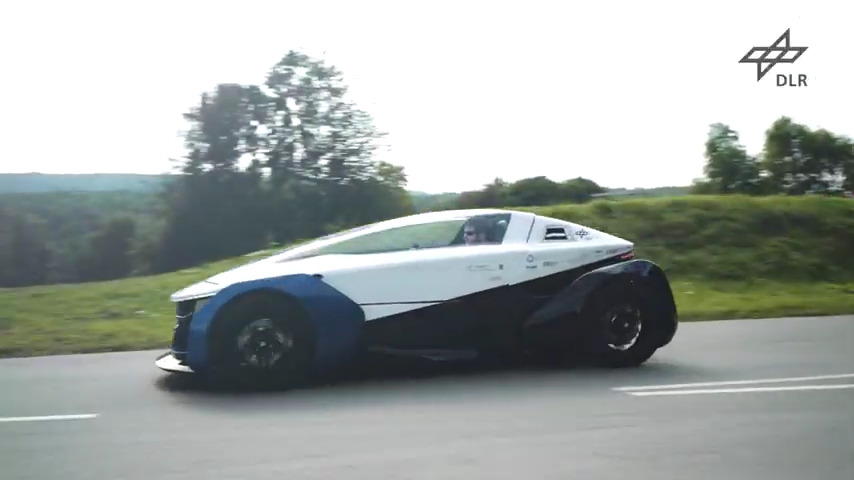SLRV addresses the safety concerns of today's L7e vehicles with a novel metal sandwich construction. Together with an innovative entry-level concept, the highly efficient hydrogen fuel cell drive and the new chassis, the ambitious safety and weight (450 kg) targets of the L7 class are achieved.

Leicht, sicher, emissionsfrei – Erstfahrt des Safe Light Regional Vehicle (SLRV)
Your consent to the storage of data ('cookies') is required for the playback of this video on Youtube.com. You can view and change your current data storage settings at any time under privacy.
Sandwich construction: light, affordable, safe
The body of the two-seater SLRV is 3.8 meters long and kept low in order to achieve the lowest possible air resistance. It is light and safe - a combination that existing vehicles in this light vehicle class (L7e) often only have to a limited extent. This is made possible by the so-called metallic sandwich construction: The material used consists of a metal top layer and a plastic foam inside. The front and rear of the SLRV are made up of sandwich panels and serve as crash zones. A large part of the vehicle technology is also housed there. The passenger cell consists of a tub with an attached ring structure. This absorbs the forces acting on the car while driving and protects the occupants in the event of a crash.
Structures made of sandwich materials have not yet been used in the series production of vehicles. The DLR has demonstrated their potential and is now working on optimizing the associated production technologies.



Zero emission: fuel cell-battery hybrid
In order to be as resource-efficient as possible on the road, the SLRV has a highly efficient hybrid drive in addition to the very light body. For the drivetrain, the DLR researchers have connected a small fuel cell with 8.5 kilowatts of continuous power to a battery. This provides an additional 25 kilowatts of power for acceleration. This combination weighs less than conventional battery systems, provides a range of around 400 kilometers and enables a top speed of 120 kilometers per hour. Also on board between the two seats is a 39-liter pressurized tank that can store 1.6 kilograms of hydrogen at 700 bar. The SLRV uses the waste heat from the fuel cell to heat the interior. In addition, the good thermal insulation of the sandwich body has a positive effect on the energy consumption of the vehicle's air conditioning system in winter.
Sustainable driving pleasure: commuting, car sharing, feeder car
With its futuristic, sporty design, the two-seater, which weighs around 450 kilograms, is a fully-fledged vehicle in the L7e class. The SLRV is suitable, for example, as a commuter car, as a feeder in local public transport or as a car-sharing vehicle - especially in urban peripheral areas or in suburban areas. It can supplement local public transport in a suburban or rural environment, be used as a second car and is well suited for car-sharing services thanks to its fast hydrogen refueling.
In terms of acquisition costs, the SLRV team currently expects to pay around 15,000 euros. With a mileage of 300,000 kilometers and a service life of ten years, this results in a price of around 10 cents per kilometer.

